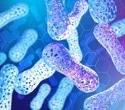Numerous microorganisms live on human skin. Staphylococcus aureus is one of these microorganisms and is an opportunistic infection that can invade skin areas with eczema, also known as atopic dermatitis.
Researchers from MIT and other universities have found that this bacteria can quickly change within a single person’s microbiome in a recent study. They discovered that S. aureus frequently develops into a variety in eczema patients that has a mutation in a particular gene that facilitates quicker skin growth.
This work is the first to show that a microorganism linked to a complicated skin condition has undergone such rapid evolution in a direct manner. The findings may also aid researchers create viable remedies that would alleviate the signs and symptoms of between 30 and 60% of people are thought to harbor S. aureus in their nostrils, where it is typically not harmful. S. aureus frequently spreads to eczema patches in patients with eczema, which affects over 10 million children and 16 million adults in the United States.
According to Lieberman, “Staph aureus can find a niche where it can grow and replicate when there is a break in the skin.” Because they release toxins and draw in immune cells, the bacteria are believed to play a role in the pathology because this immune response worsens damage to the skin barrier.
The purpose of this study was to investigate how S. aureus can adapt to live on eczema sufferers’ skin.
These microorganisms typically reside in the nose, so we wondered if they would need to adapt to live on skin affected by atopic dermatitis. And from observing its evolution, can we infer anything about how these bacteria are interacting with atopic dermatitis skin? says Lieberman.
The researchers gathered patients with moderate to severe eczema, aged 5 to 15, to try to provide answers to such queries. For three months, they collected samples of the bacteria on their skin once a month. At nine months, they collected samples once more. The nostrils, the forearms, which are typically unaffected, and the backs of the knees and insides of the elbows were all used to collect samples.






